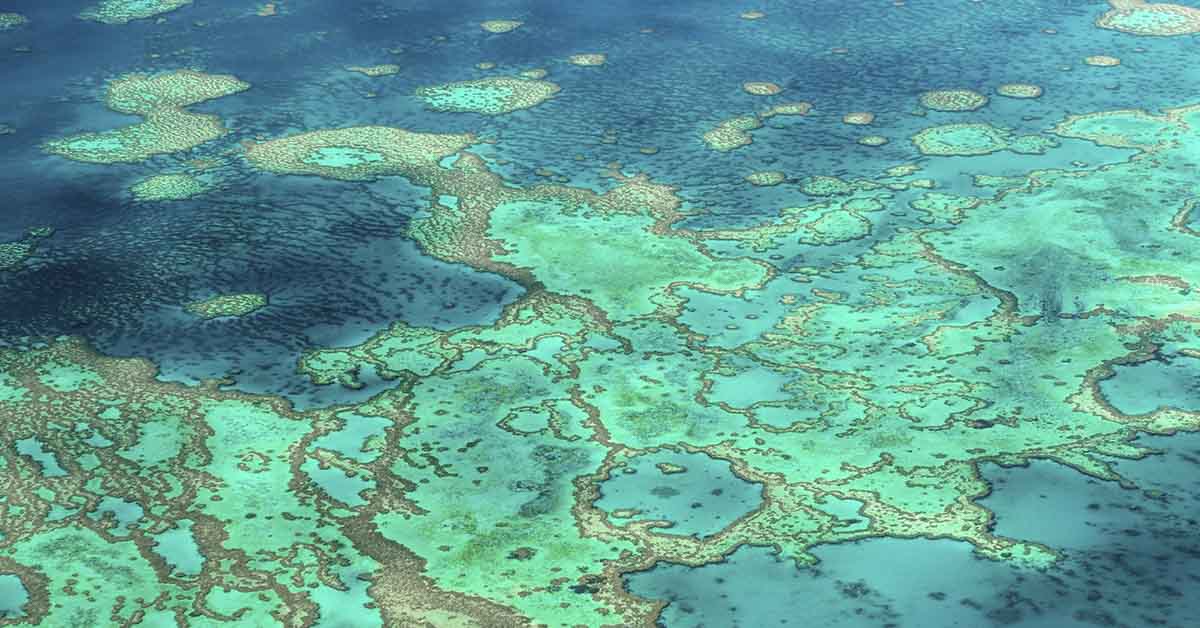A gargantuan blob of sargassum seaweed has accumulated in the Atlantic Ocean and is headed for Florida, bringing with it millions of tons of odorous seaweed. Thanks yet again to climate change, this smelly seaweed has been blooming more than ever and is migrating to American shores. Though an important part of the ecosystem, its growth rate is increasing rapidly, and it is setting things off-balance.
Sargassum: The Smelly Seaweed Heading For Florida
Sargassum is a type of seaweed that floats in the water and has been growing in huge amounts off the coast of Florida. As a result, it’s creating problems for residents who are forced to deal with its strong odor and clogged beaches. The sargassum seaweed that is currently migrating from the Caribbean to Florida isn’t just smelly; it can also pose a threat to marine life and humans alike. (1)
The seaweed has been migrating from the Caribbean to Florida for several years now, but it’s only recently that it has become a serious problem. It’s created so much beach pollution that officials struggle to keep up with it all. The stench can be overwhelming, and those who live near the beaches complain about having difficulty breathing because of it.
What is Sargassum Seaweed?
Sargassum seaweed is a type of macroalgae that grows in tropical and subtropical waters. It’s also called gulfweed, gulf moss, Atlantic weed, or rockweed and can be found floating on the ocean surface or attached to mangroves. The algae are brownish-green in color and have many uses, including as fertilizer for crops such as rice. (2)
Sargassum seaweed is formed when the reproductive cells of brown macroalgae are released into the water and then drift with currents until they come together. As more reproductive cells join the mass, it grows larger and floats on the ocean’s surface. These floating algae can be found throughout tropical waters in large mats stretching for miles. The mats can be seen in the Atlantic Ocean, the Gulf of Mexico, and the Caribbean Sea.
Sargassum Seaweed is an Important Part of the Ecosystem
Sargassum seaweed is an important part of the ecosystem for many reasons. It provides a place for animals to hide and find food, it provides shelter from predators, and it acts as a nursery for fish eggs and even some species of turtles. The seaweed also helps to filter the water, which helps keep it clean. When sargassum seaweed dies, it provides food for other organisms in the ocean.
What Harm Does Overgrowth of Sargassum Do To The Environment?
When sargassum seaweed is overgrown, it can cause problems for the ecosystems in which it grows. Its growth blocks sunlight from reaching other plants on the seabed and stops oxygen production by phytoplankton. This can lead to declining biodiversity and productivity in areas with an overgrowth of seaweed.
When it dies, it also releases huge amounts of carbon dioxide into the atmosphere. This can cause an increase in the number of greenhouse gases in the atmosphere and further contribute to climate change. The overgrowth of seaweed also causes problems for local ecosystems by smothering seagrass beds, coral reefs, and mangroves. These habitats provide homes for many species of fish, birds, and mammals.
Why has Sargassum become increasingly nomadic in recent years?
There are many theories as to why Sargassum has become nomadic. It is thought that increased rainfall in the Caribbean and the Gulf of Mexico has caused an increase in nutrient levels, which then encourages phytoplankton growth. Some scientists also believe that global warming may be contributing to increasing ocean temperatures. This would mean that there is more energy available for photosynthesis and, therefore, more phytoplankton.
In addition, it is thought that the movement of Sargassum may be caused by ocean currents. The Gulf Stream, a warm current that travels from Florida to Europe, is more likely to carry floating debris from the Caribbean and the Gulf of Mexico into the North Atlantic. This can cause Sargassum to move northwards and eventually end up on British shores.
What Is Florida Doing About Sargassum Accumulation?
In June 2018, Florida Governor Rick Scott declared a state of emergency over the issue of Sargassum accumulation and its impact on tourism. He allocated $100 million to tackle the problem by building artificial reefs in Florida’s coastal areas. This is intended to provide an alternative habitat for fish, which will, in turn, attract predators that eat Sargassum. (3)
Until we can make the appropriate changes to prevent the smelly seaweed from blooming in such vast amounts, Florida and other places must learn to manage it. In Florida, they collect the seaweed off of beach shores and take it to a facility where they compost the sargassum and turn it into the soil. This is just another reminder that we must do more to combat climate change and protect our environment.
Keep Reading: World’s Oldest Water Lies At The Bottom Of A Canadian Mine And Is 2 Billion Years Old
Sources
- “”Massive blob of smelly seaweed could mean trouble for Florida beach vacations” Fox Weather Hillary Andrews and Andrew Wulfeck. March 2, 2023.
- “What is Sargassum?.” Ocean Explorer
- “South Florida Oceans are in Deep Trouble!.” CAVS Connect. Mark Snyder.
August 15, 2018.

